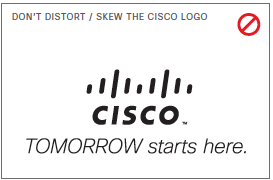
Most companies we do business with publish comprehensive graphics standards manuals setting forth guidelines akin to those in the classic New York Transit Authority manual of 1970.
These manuals set rules for trademarks and logos, typography, advertising, and web publishing. Many provide guidelines and PowerPoint templates for presentations. Some attempt to provide a visual language of images and diagrams relevant to specific technology solutions and customer business drivers.
Why no standards for marketing videos?
But I’ve never seen one with standards for marketing videos, or any sort of motion graphics. (I’d very much like to, if you know of any.) It’s not hard to think of historical reasons why this should be so, at least for technology marketers.
- Marketing videos are relatively new tools and are still viewed as exotic or luxury items in some companies
- Video production tends to be ad hoc, as in “Hey, we need a video!”
- There are all kinds of videos — webinars, demos, testimonials, slide show recordings, etc.
- Every “producer” has his or her own aesthetic preferences and ideas about who the intended audience is, and what they’ll respond to.
- There’s a lot of turnover in marketing departments. Producing a video that looks different from what your predecessors created is a high-visibility way to make your mark.
Look at the videos published to YouTube by almost any company — the absence of standards will be readily apparent.
Consistent “style”
Don’t try to standardize styles. Sometimes whimsical cartoons work best, sometimes talking heads, sometimes screencasts and PowerPoint recordings. It is a good idea to set style expectations in advance, bringing the team responsible for branding guidelines into the conversation early. Even if they didn’t write down their video standards, they may have some in mind. It’s not easy to implement standards after the video is completed.

On the other hand, just as all standards manuals show you things you’re not allowed to do with the logo, outlawing certain types of video treatments would be a good thing for all concerned. Start with the following annoyances:
- Whiteboard videos where the moving hand simply unmasks static illustrations “draws” sans serif type
- Webinar videos where a voice drones on for ten minutes while a single boring and increasingly irrelevant slide is displayed the “video” screen.
- Software “demos” that attempt to illustrate business use cases with empty or meaningless data fields
- Explainer videos that convey no information with the sound turned down — that means the graphics aren’t pulling their weight.
Standard opening and closing
There should be a style specified for openings and closings. In most cases, it shouldn’t take more than a second or two. For many companies, graphic standards call for “hero” images (photos of attractive people) to open and close presentations. Stock footage can fill the bill.
Permissions
One of the most common reasons we see for “updating” a video is to add or delete customer names or logos. Some companies (and their legal departments) are more pernickety than others about this, but it would be a good idea to decide what permissions are needed before loading up a video with customer logos.
Graphic standards for video is something we expect (and hope) to see more of. They can enhance your brand, and save on expensive rework in the video production process.
.



